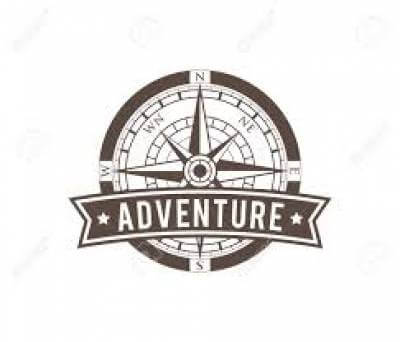Annapurna Circuit Trek 11 Days
The 11 Days Annapurna Circuit Trek, One of the best and popular treks in Nepal trekking around the Annapurna. Picturesque villages, turbulent river gorges, desolate high Himalayas passes, relaxing hot spring, Buddhist and Hindu temples, delightful farming villages, and at every turn a different view of the Annapurna summits.
Explore the Annapurna circuit, one of the most geographically and culturally diverse treks in Nepal, during this 17-day guided trip. Annapurna circuit trek trail opened for tourists since the 1980s, the Annapurna Circuit has been recognized as one of the world's best trekking routes. After arrival in Kathmandu, we drive from Kathmandu to Nagdi and start our trek from here. Trek past the villages of Nagdi, Chamje, and Chame to reach Manang, where we will stay for a day to acclimatize ourselves to adjust our body in high altitude.
Visit Barge Monastery, the largest monastery in Manang district. Afterward, Cross the mighty Thorong La Pass (5416m), which one is world’s widest pass, and descend to Jomsom (2,750m) via Kagbeni. Relax at hot springs in Tatopani, enjoy amazing Annapurna Himalayas views from Poon Hill before back to Kathmandu. The trek past beautiful mountain hamlets, through colorful rhododendron forests and over the foothills of the Annapurna and Dhaulagiri peaks. Enjoy magnificent views of Annapurna I, II, III, and IV as well as Dhaulagiri and Mount fishtail mountains, among others High Himalayan peaks. Cross many beautiful rivers and streams. See amazing waterfalls and natural hot springs as well as the deepest (Kaligandaki gorge) gorge in the world, during this trek.
The Annapurna circuit trek itinerary is curated for trekkers who seeking to experience a more adventurous journey in Nepal Himalaya and experience a diversified scenery, geography, and different climate zones of the Annapurna Round.
ITINERARY
Day 1 : Arrival at Kathmandu (1,400m) and transfer to hotel.
Upon arrival at Kathmandu Tribhuvan International Airport, you will be met by a Sherpa Expedition & Trekking representative and taken by private vehicle to your hotel. After checking in at the hotel, you will be briefed on what to expect on your trek and given an itinerary. With time to spare you can wander around the tourist hub of Thamel or take in the sights of Kathmandu Valley. No meals included on this day.
Day 2 : Drive from Kathmandu to Besishahar to Chame (2760m) Duration: 8-9 hours.
Today’s road trip crosses several rivers, the Trishuli River – where you may see people rafting and the Marsyangdi River close to Chame. Our first destination is Besisahar and then finally to Chame. This is a good opportunity to take in the local scenery and get a feel for what lies ahead of your trek.
Day 3 : Trek to lower Pisang (3200m) Duration: 4-5 hours.
Leaving Chame we pass through the village of Telekhu and on the trail have some wonderful views of the Annapurna Ranges and Mt. Pisang (6091m) until we have to re-cross a suspension bridge to the south side of the Marsyangdi River. After crossing the river we ascend and pass a pine-forest following the trail through the upper reaches of the Manang Valley before arriving at Pisang.
Day 4 : Trek to Manang (3500m) Duration: 5-6 hours.
Pisang is the start of our trek in the upper Manang area. Today we trek to Braga; a Tibetan village with its distinctive architecture and houses constructed one upon the other. One of Manang’s main attractions is its Gompa, being the largest in the Manang region. Manang is also popular with trekkers who stay here in order to acclimatize before heading to higher altitudes.
Day 5 : Exploration & Acclimatization at Manang.
Health and climbing professionals recommend that before heading to higher elevations that trekkers should spend some time acclimatizing. They also strongly recommend staying active. From Manang you will have some great views of Annapurna II; Annapurna III (7555m); Gangapurna (7454 m); and to the south to Tilicho (7132 m); and the Grand Barrier (a 7000m ridge) to the west; Chulu West (6583m) and Chulu East (6059m) to the north. In order to better acclimatize to these higher altitudes, we will trek up to Mt. Khangsar (3756m) and then return to Manang.
Day 6 : Trek to Yak Kharka (4,000m) Duration: 4-5 hours.
Today we have a 10.4 km uphill trek to Yak Kharka passing through juniper forests and along the trail will see yak grazing in these alpine pastures. On the route, we also pass the only teahouse at Thorong Khola (river). Depending on the weather and trail conditions we may decide to go a little further and stay the night at Ledar.
Day 7 : Trek to Thorang Phedi (4,450m) Duration: 4-5 hours.
As we slowly ascend higher our body progressively gets used to the higher altitude. We follow along the east bank of the Jarang Khola (river) and view steep bluffs before reaching Thorong Phedi (meaning foot-hills). We may also decide to follow the trail for one more hour to High Camp (4800m). If we are fortunate we will see the famous blue sheep and possibly a snow leopard! This is also home to Lammergeyer (bearded vulture). There is also a belief legendary griffons are in this region!
Day 8 : Trek to Muktinath (3,800m) via Thorang-la Pass (5,416 m) and drive to Jomsom Duration: 8-9 hours
Today is probably going to be one of the most physically demanding days of the trek, hiking for between 8 and 9 hours. The higher altitude certainly makes it more difficult, and sometimes the strong winds in these upper regions make it harder too. Along the trail, we might pass sheep, yaks, and merchants transporting their goods by Yak or donkey. Once we reach Thorong La Pass we will have some truly amazing views of Annapurna, Gangapurna, and the eye-catching peak of Khatungkang (6484m). Crossing the pass we then descend about 1600 meters. Dhaulagiri (Dhavali Giri, meaning “White Mountain”) and the highest mountain that is entirely in Nepal is also visible. The trail is more undulating and quite easy before coming to Muktinath. After we reaching muktinath we will take a sharing Jeep or Bus drive to Jomsom for overnight stay.
Day 9 : Drive from Jomsom to Pokhara (8,50m) Duration: 7-8 hours.
Today we drive to Pokhara by local bus on a 7-8 hour journey, firstly arriving at Tatopani via Beni Bazaar and then on to Pokhara. Pokhara is famous for its lake – Phew Tal, and is popular with travelers. It has all the facilities of a small city. Your hotel will be by “Lakeside”. You may wish to watch the sunset over the lake and the mountains. It is a great way to end the day and relax.
Day 10 : Drive back to Kathmandu (1,350m) Duration: 6-7 hours.
Today we head back on a 6 to 7 hour drive to Kathmandu with many warm memories of Nepal and its unique culture, village people and geography. These memories will be with you for a long time - and as you look back on them they will put a smile on your face.
Day 11 : Transfer to the International Airport for your final departure.
Today is your last day in Nepal and Sherpa Expedition and Trekking will take you to the airport at least three hours prior to your scheduled departure time. On your flight home, you can start planning your next adventure in Nepal.
SERVICES
Cost Included In Your Package
- Airport pick up and drop services on a private vehicle.
- 2 night’s hotel accommodation in Kathmandu with breakfast
- Kathmandu - Bhulbhule transfers on a local bus, Pokhara - Kathmandu transportation on a Local bus
- One night hotel accommodation in Pokhara with breakfast
- Jomsom To Pokhara transportation by Bus or sharing jeep.
- Three Meals a day [Breakfast, Lunch, and Dinner] during the trek
- Accommodation on beautiful cozy tea houses as per the itinerary
- Annapurna Conservation Area Project (ACAP) entry permits and Trekkers Information Management System (TIMS) cards
- Experienced English speaking, government licensed and ministry of tourism trained trekking guide with meals, accommodation, salary and insurance
- Strong experienced Sherpa helpers [porters] with meals, accommodation, salary, and insurance
- Assistant trekking guide for groups over 8 people with meals, accommodation, salary, and insurance
- Down jacket, four seasonal sleeping bag, duffel bag and trekking map (down jacket and sleeping bag are to be returned after trip completion)
- Comprehensive first aid medical kit carried by the guide / American medical association approved Oximeter
- Necessary paper works, all government, and local taxes, company service charges
- Oxygen meter to check your pulse and oxygen saturation and heart rate twice daily (Very useful to check Altitude Mountain Sickness(AMS) symptoms) which will ensure your health during the trek.
Cost Excludes
- Meals whilst you are in Kathmandu Lunch and Dinner.
- Meals in Pokhara.
- Nepal entry visa fee (easy to obtain the visa on arrival at Tribhuvan International Airport – Kathmandu). $30 USD for 15-day, $50 USD for 30 Days, and $125 USD for 90 Days visa.
- Your Travel and medical rescue insurance(recommended).
- International airfare.
- All the alcoholic and nonalcoholic, soup, tea, coffee, hot chocolate, cocoa, mineral water, extra food, cold and hot drinks on trek ( i.e. those you choose to purchase along the way and during evenings in the tea houses)
- All desserts & sweet things like chocolate, cake, pie, pudding.
- Hot shower and battery charging at the tea houses.
- Tips for the guide, porter, and driver (tipping is expected).
EQUIPMENTS
The following information will give you some idea about what you need to bring for the trek. It is important you do not forget the essential items, as this will determine your comfort and safety on the trek. Equally important is that you do not burden yourself with unnecessary equipment on the trek.
- Sleeping Bag (Sherpa Teams will provide but need to return after completing the trip)
- Duffel Bag (Sherpa Teams will provide but need to return after completing the trip)
- Fleece jacket or pullover
- Waterproof windbreaker or windcheater
- Thermal underclothes
- Rain poncho
- Down jacket (Sherpa Teams will provide but need to return after completing the trip)
- Fleece or wool trousers
- Sun hat or scarf
- Trekking pants (two pairs)
- Mittens or woolen gloves
- Hiking socks (several pairs)
- Moisture-wicking shirts, including t-shirts
- Trekking shoes or boots with spare laces
- Flip-flops or sandals for relaxing in the evenings
- Underwear (several pairs)
- Swimsuit or swimming costume
- Sunglasses
- Headlamp or flashlight/torch
- Sleeping bag (Sherpa Teams can provide this for you)
- Trekking poles (if desired)
- Hiking backpack with a capacity of at least 40 liters
- Small lock for your backpack
- Reusable water bottles (at least two liters)
- Water purification tablets or filtration device
- Wash towel
- Basic first aid kit
Toiletries (tissues, toilet paper, moisturizer, lip balm, sunscreen, sanitary pads, hand sanitizer, nail clippers, a small mirror, toothbrush, toothpaste, glasses, contacts, etc.)
GOOD TO KNOW
Accommodation
You will be accommodated in 3-star hotels in Kathmandu. During the trek, we will be staying at lodges/ teahouses. You may find comfort and better quality teahouses - having attached bathroom at lower levels- until you reach higher elevations, where the accommodation is more basic with bare necessities.
Meals during the trek
In Kathmandu, your hotel includes breakfast, whereas all meals (breakfast, lunch, and dinner) will be provided during the trek. A staple food of the Manang & Mustang regions is potatoes, oats, buckwheat, Sherpa stew, and Tibetan bread. Sherpa’s’ started farming potatoes when the first seeds were introduced to the region in the early 90s. There is a limited choice of food at higher elevations and except many potato dishes. Potatoes are high in carbohydrates – an excellent source of energy needed at high altitudes.
Transportation
We use a private car for sightseeing and for the airport to hotel pick and drop off. We use public transportation or local buses during the trek.
Physical fitness
This can be a challenging trek where you often have to walk 6-7 hours a day. You need past experience of hiking or trekking but if you have done any kind of trekking activities then it is always a plus! We have met people from all walks of life, shapes, and sizes who have completed the trek. The only difficult part is when altitude sickness strikes and the effect that it can have on your body. Before leaving for Nepal it is good if you can prepare yourself physically by increasing your stamina and oxygen intake.
Remember – The better prepared – the more enjoyable your trek!
MAP
PHOTOS/Videos
Departures
Select a departure month
Fill out the form below and a Travel Expert will reach out to create your perfect tour.
FAQS
How long is the Annapurna Circuit Trek?
The total length of the Annapurna Circuit Trek is approximately 160-230 kilometers, depending on the specific route taken.
How many days does it take to complete the trek?
On average, it takes around 6-20 days to complete the Annapurna Circuit Trek, including rest days and acclimatization days.
What is the best time of year to do the Annapurna Circuit Trek?
The best time to do the Annapurna Circuit Trek is during the spring (March to May) and autumn (September to November) seasons. These months offer clear skies, moderate temperatures, and stable weather conditions.
Do I need a permit to trek the Annapurna Circuit?
Yes, you will need to obtain the Annapurna Conservation Area Permit (ACAP) and the Trekkers' Information Management System (TIMS) card to trek the Annapurna Circuit. These permits can be obtained in Kathmandu or Pokhara.
What is the difficulty level of the Annapurna Circuit Trek?
The Annapurna Circuit Trek is considered to be a moderately difficult trek. It involves steep ascents and descents, high altitude, and long walking hours. However, with proper preparation and acclimatization, it can be completed by individuals with a reasonable level of fitness.
Are there tea houses or lodges along the trekking route?
Yes, there are numerous tea houses, lodges, and guesthouses along the Annapurna Circuit Trek route. These provide accommodation and meals for trekkers. It is advisable to book your accommodation in advance during peak trekking seasons.
What are the highlights of the Annapurna Circuit Trek?
The Annapurna Circuit Trek offers stunning views of the Himalayan peaks, including Annapurna I, II, III, IV, Dhaulagiri, Machhapuchhre (Fishtail), and Manaslu. The trek also takes you through diverse landscapes, including lush valleys, terraced fields, rhododendron forests, and high mountain passes like Thorong La.
Do I need a guide and porter for the trek?
While it is not mandatory, it is highly recommended to hire a guide and porter for the Annapurna Circuit Trek. A guide can provide valuable information about the route, culture, and ensure your safety, while a porter can help carry your heavy backpack and ease the physical load.
What are the altitude sickness risks during the trek?
Altitude sickness can be a concern during the Annapurna Circuit Trek, especially when crossing high passes like Thorong La (5,416 meters). It is important to acclimatize properly, drink plenty of water, and ascend slowly to minimize the risks.
What are the essential items to pack for the Annapurna Circuit Trek?
Some essential items to pack for the Annapurna Circuit Trek include sturdy hiking boots, warm clothing, a good quality backpack, sleeping bag, trekking poles, water purification tablets, first aid kit, sunscreen, and a headlamp, among others.
Latest Traveller’s Reviews
Travel experiences of our clients who recently returned from their trips.
100%
Based On 31 Reviews
Yan Song
United States
August 13, 2024
Excellent Guides and Support Staff
Sherpa Expedition & Trekking made our Annapurna Circuit trek truly memorable. The guides were excellent, combining extensive knowledge with a genuine passion for the trek. Their support throughout the journey was invaluable, making sure we were safe and comfortable. The porters were efficient and friendly, and the accommodations and meals were consistently good. The team’s attention to detail and personal touch made a significant difference, ensuring a smooth and enjoyable trek. For anyone considering the Annapurna Circuit, Sherpa Expedition offers a top-quality service that is well worth the investment.
Drsamiulhaq Hamdard
Hong Kong
July 23, 2024
Outstanding Trekking Experience
The Annapurna Circuit trek with Sherpa Expedition & Trekking was an outstanding experience. Their team’s professionalism and dedication were evident from start to finish. The guides were not only skilled but also personable, adding a personal touch to the journey. The porters worked diligently to ensure our comfort, and the overall logistical arrangements were handled seamlessly. Sherpa Expedition’s commitment to providing a high-quality trekking experience was clear in every detail, from the service to the support. This company comes highly recommended for anyone seeking a memorable trek.
Charm Sotto
United Kingdom
July 10, 2024
Incredibly Supportive and Knowledgeable
Sherpa Expedition & Trekking provided an outstanding Annapurna Circuit experience. Their team was incredibly supportive and knowledgeable, making sure we were well-informed and prepared for every stage of the trek. The guides were experts in the region and shared their extensive knowledge with enthusiasm, while the porters were both courteous and hardworking. The attention to detail in planning and execution was evident, ensuring a smooth and enjoyable trek. We appreciated their dedication to making our adventure memorable and recommend them highly for their exceptional service.
People Considering This Package Right Now Check availability
























